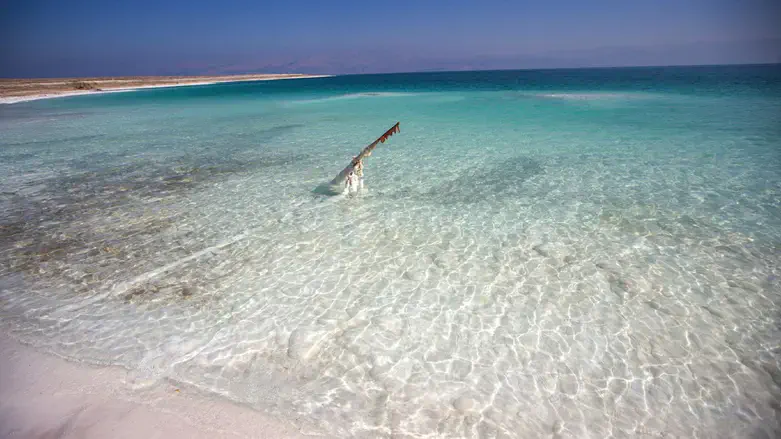
Parshat Vayikra presents and details the five general categories of korbonot (sacrifices), commencing with the Olah (Elevation Offering) and concluding with the Asham (Guilt Offering). To be precise, the parshah features the korbonot in this order: (1) Olah, (2) Mincha (Meal Offering), (3) Shelamim (Peace Offering), (4) Chatat (Sin Offering) and (5) Asham. One would expect the Mincha to be featured last, as it is a korban consisting of grain, which is a totally different classification than the other four types of korbonot, which are all animal offerings.
Why does the Torah feature the Mincha immediately after the Olah, right before the Shelamim, rather than after all four of the animal korbonot? What is the significance of this surprising sequencing?
We find throughout the Torah that when a korban must be brought for atonement purposes or to purify from spiritual contamination, one who cannot afford an animal korban may bring a Mincha, which is far less costly. The ideal is an animal korban, but one who cannot afford it in these specific circumstances may offer a Mincha instead.
Furthermore, even though the Torah does not specifically limit other varieties of the Mincha to those of lesser means, some Meforshim (Commentators) emphasize that the Mincha is typically offered by the poor. The Ba'al Ha-Turim and Keli Yakar cite the Gemara in Menachot (104B): Rebbe Yitzchak said, "Why does the Torah use different terminology regarding the Mincha, such that the Torah refers to one who brings a Mincha as a 'soul' and states, 'And a soul who offers a Korban Mincha to Hashem…' (Vayikra 2:1)? The Holy One, Blessed is He, said, 'Who is accustomed to bring a Mincha (rather than an animal korban)? A poor person. I consider it as if by offering a Mincha, the poor person has offered me his very soul.'"
The Kli Yakar elaborates that in conjunction with this is the Mincha normally not leavened (it is “Lechem Oni, the bread of the poor", he writes,) for the Mincha reflects the great humility of the poor person, whose ego is not inflated, similar to unleavened bread. The Kli Yakar elucidates that in his state of poverty, the poor person is excessively humbled, with his eyes always lifted toward Hashem - and thus does the Torah introduce the Mincha with the phrase "and a soul who offers", in reference to the contrite and destitute person who offers his entire soul to Hashem.
This is what makes the Mincha so special, for the self-sacrifice and humility of the poor person who offers it is unparalleled. And this is the significance of the Mincha appearing immediately after the Olah. Whereas the Olah is the most sacred korban, as it is totally consumed by fire when offered to Hashem, and no one may eat from its meat, for the entirely of the Olah ascends on the Mizbe’ach (Altar), the Mincha, which is associated with the impoverished, simple and humble members of society, likewise manifests a unique and extremely elevated plane of holiness, that, despite its low monetary value and simplicity, is extremely precious to Hashem due to the pure devotion and self-effacing nature of he who offers it.
This is why the Mincha comes immediately after the Olah, as the incredibly stark and robust commitment to Hashem that the Olah embodies is shared by the Mincha, as reflected by the pure sincerity and devotion of the poor who offer it.
In the course of its presentation of the Mincha, the Torah introduces the requirement that korbonot be salted before being offered; the Torah refers to “the salt of the covenant of God” in conjunction with this mitzvah. (Vayikra 2:13) Rashi explains: “A covenant was established for salt upon the Six Days of Creation, when the Lower Waters were assured that they would be offered on the Mizbe’ach, via the mitzvah that korbonot must contain salt (which comes from the sea) and via the mitzvah of Nisuch Ha-Mayim (Water Libations) on Sukkot”. What does Rashi mean?
Additionally, the Rambam rules that although all korbonot must be salted, failure to salt a korbon does not invalidate it – with the exception of the Mincha, which is invalid if not salted. (Hil. Issurei Mizbe’ach 5:12) What is the message being conveyed by this special connection between the Mincha and salt?
I believe that there is one answer to these questions:
Salt is indeed among the lowliest of food substances; it is abundant and is basically free or of extremely low cost. And the same is true of water. Hashem created the world to be sanctified by mankind, and hence was it declared that the lowliest food materials – salt and water – would be offered on the Mizbe’ach in the holiest place in the world, such that every component of the material world, including the most menial matter, would be intensely sanctified and ascend to the heavens. Raising these lowly substances – salt and water – from the sea or the earth to the pinnacle of kedushah, sanctity, represents a radical infusion of holiness and a most powerful ascension.
Similarly, when a destitute person, who is on the lowest rungs of society and can barely scratch together a few cents, offers a simple meal korban to Hashem, is the level of kedushah achieved by this great act of self-sacrifice of the highest order. And hence the message of salt being indispensable for the Mincha, as the two in conjunction embody the bringing together of an offering from the lowliest substance in the world by the lowliest people in society, resulting in an incredibly potent and holy elevation from the Mizbe’ach to the heights of the heavens.
This is the exceptional uniqueness of the Mincha.
Rabbi Avrohom Gordimeris a rabbinic coordinator at OU Kosher, where he specializes in the dairy industry.